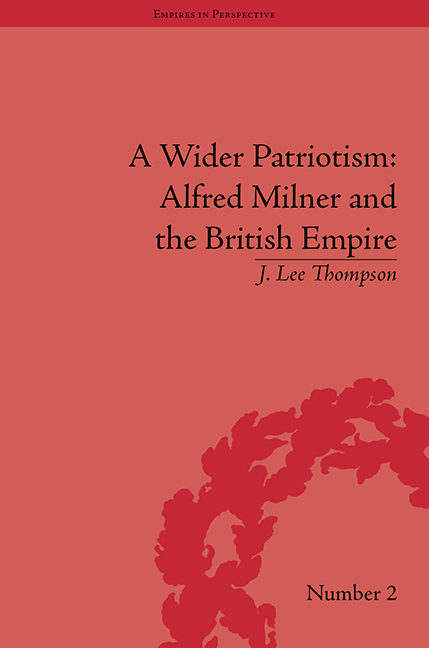Book contents
- Frontmatter
- CONTENTS
- Preface
- Acknowledgments
- Part I A Question about Which I Have Never Been Able to See the Other Side
- Part II Civilian Soldier of the Empire: South Africa
- 4 Building Bridgeheads to War
- 5 Milner and the Imperial Ladies
- 6 The Most Important Question: Race in South Africa
- 7 A Kindergarten to Govern the Country: South African Reconstruction
- Part III Constructive Imperialism
- Part IV Imperialism on the Anvil
- Notes
- Works Cited
- Index
7 - A Kindergarten to Govern the Country: South African Reconstruction
from Part II - Civilian Soldier of the Empire: South Africa
- Frontmatter
- CONTENTS
- Preface
- Acknowledgments
- Part I A Question about Which I Have Never Been Able to See the Other Side
- Part II Civilian Soldier of the Empire: South Africa
- 4 Building Bridgeheads to War
- 5 Milner and the Imperial Ladies
- 6 The Most Important Question: Race in South Africa
- 7 A Kindergarten to Govern the Country: South African Reconstruction
- Part III Constructive Imperialism
- Part IV Imperialism on the Anvil
- Notes
- Works Cited
- Index
Summary
Only a month after the Boer War began, Selborne commented to Milner about the post-war settlement that it was ‘well not to divide the skin of the boar before he is killed, but it may be tentatively permissible to consider what would be the best thing to do with the skin supposing that the spear is driven home’. Selborne asked Milner if he would consider taking on the gigantic ‘Augean stable’ as Governor of the Transvaal in the interim Crown Colony stage of reconstruction being considered. This would mean giving up the Cape governorship, but remaining High Commissioner. Milner responded that would be ‘happy enough myself to try and clean the Augean stable at Pretoria’. He added that the ‘question of treating this as anything else than a war of conquest is settled by the invasion and annexation of our territory, and by the deliberate intention of the Republics … to turn us out of Africa’. It was evident to Milner that ‘we must absolutely smash them politically, or our own expulsion from this part of the Continent … can only be a matter of time’. Once the British prevailed, he told Selborne that ‘autocratic government’ in the republics was ‘for a time inevitable until the mess is cleared up’.
A year later, on this first semi-official trip north, Milner was accompanied by a new aide, Lionel Curtis, who would become a leader of the so-called ‘Kindergarten’ of acolytes that made names for themselves working with Milner in South Africa. Kitchener had for some time referred to Milner's staff as his children or his crèche, but Curtis credited one of Milner's critics in South Africa with its first application. ‘The name Kindergarten’, Curtis later wrote, ‘was given us in derision by Sir William Marriott, who was busy making trouble for Milner in Johannesburg’. Curtis was the second of the Kindergarten recruits. The first, J. F. (Peter) Perry had arrived a few months before as Assistant Imperial Secretary with special responsibility for the native territories.
- Type
- Chapter
- Information
- A Wider PatriotismAlfred Milner and the British Empire, pp. 88 - 106Publisher: Pickering & ChattoFirst published in: 2014



